#30. Lilac-Breasted Roller
This beautiful animal should be known as ‘Rainbow Roller’, instead of ‘lilac’ only, since it has a total of eight colors in its feathers: green, white, black, yellow, turquoise, dark blue, reddish-brown, and lilac. It looks like a painting, right?
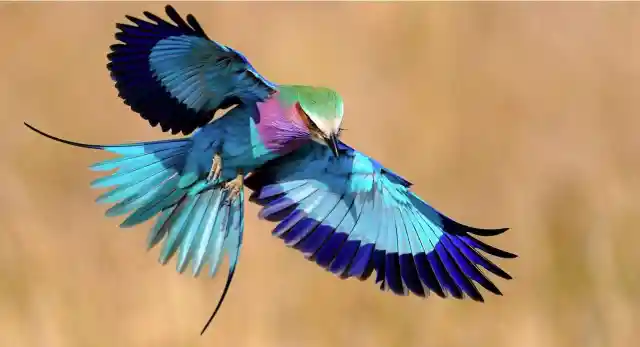
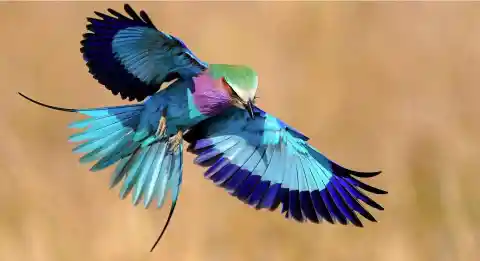
The lilac-breasted roller is the national bird of Kenya. This is so because the many colors of the bird represent the country’s ethnic diversity since nearly 40 Ethnic groups live in Kenya. The lilac-breasted roller is also included in the folklore of many African cultures and is a symbol of peace. In fact, African kings would sacrifice these birds to celebrate the end of war.
#29. Irrawaddy Dolphin
The Irrawaddy Dolphin gets its name because of the Irrawaddy River, where the animal can be spotted from time to time near the coastline. Although it resembles a dark-colored beluga whale, it is included in the family of the killer whales or orcas.


Opposite to its closest relatives, they do not feed on any other marine mammal, as they live on a diet of fish, crustaceans, cephalopods, and fish eggs. The Irrawaddy Dolphin is a protected species, so hunting or fishing them could lead to fines, and even serving time in prison.
#28. Thorny Dragon
Thorny Dragons or ‘Thorny Devils‘ are lizards whose bodies are covered with spikes no bigger than the thorns of a rose. These thorns, together with the fact that they can inflate their chests in order to seem bigger, result in an effective defense mechanism. Moreover, Thorny Dragons can change its color according to weather, temperature, and the level of threat the animal feels.
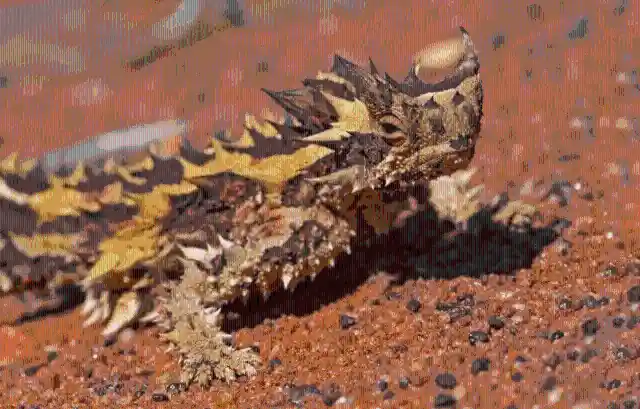
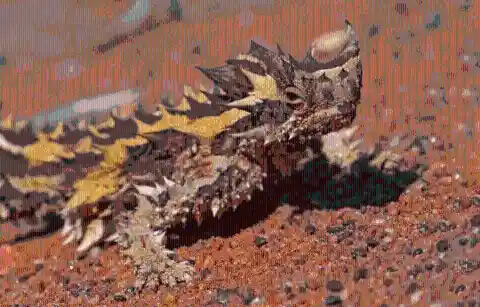
They are of a brownish color, but in warm weather, they turn yellow and red, and if the weather is cold or they get alarmed by a predator, they become of a darker color. But their most interesting feature is its “false head”: when threatened, they hide their real heads between their forelegs and an appendage with thorns appears from the back of their necks.
#27. Gharial
The Gharials’ name owes to the bump that forms at the end of the male’s snouts, which resemble Indian pots called ‘gharas’. Curiously, these bumps are developed when male gharials are around ten years old. It kind of looks like a trumpet!
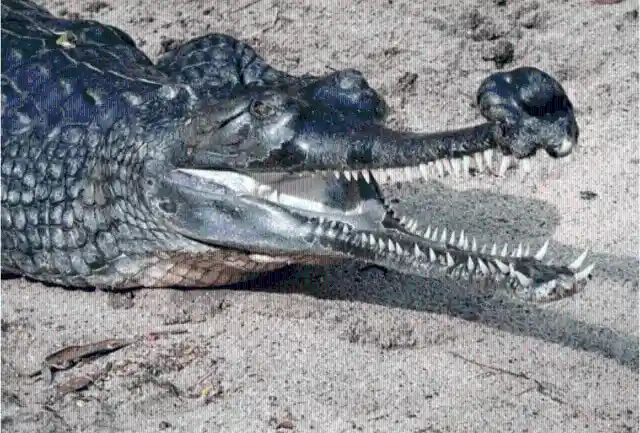
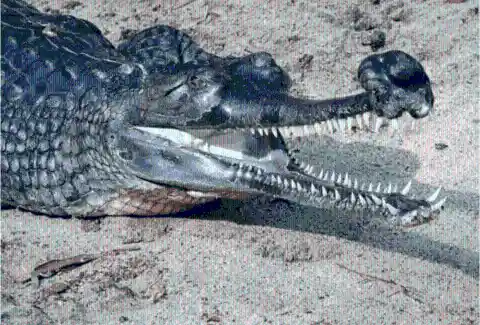
The gharials hold their snouts open while basking, behavior known as ‘gaping’. This mechanism serves two purposes. Firstly, to intimidate potential predators, and secondly (and most importantly), to keep the head area cool and oxygenated while the rest of the body warms up.
#26. Pink Fairy Armadillo
This member of the armadillo family is the smallest and cutest of them all. This little mammal just grows about 7 to 11 cm long. Pink fairy armadillos are found in the grasslands, sandy plains, dunes, and deserts of central Argentina.

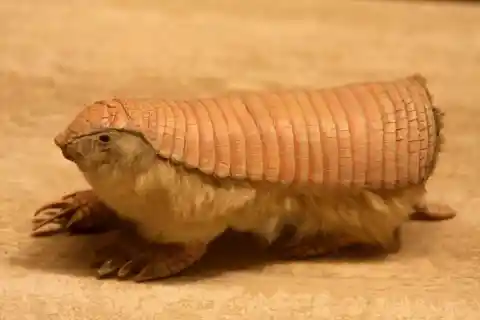
The pink fairy armadillo is nicknamed the “sand-swimmer” because it is said that it can burrow through the ground as fast as a fish can swim in the sea. They are supposed to be in great danger of extinction since they are susceptible to trigger a stress response when they are exposed to climate changes, especially to very cold temperatures. They are also victims of pesticides adhered to ants, which are their primary source of food.
#25. Jerboa
Jerboas are very rare animals since they seem to be a hybrid of a kangaroo, a mouse, and a hare. These little creatures can jump up to 9.8 feet and run at a speed of 15 miles per hour if they are escaping from a predator. These rodents are about 2.75 to 3.5 inches long while their tails are about 6.3 inches long.
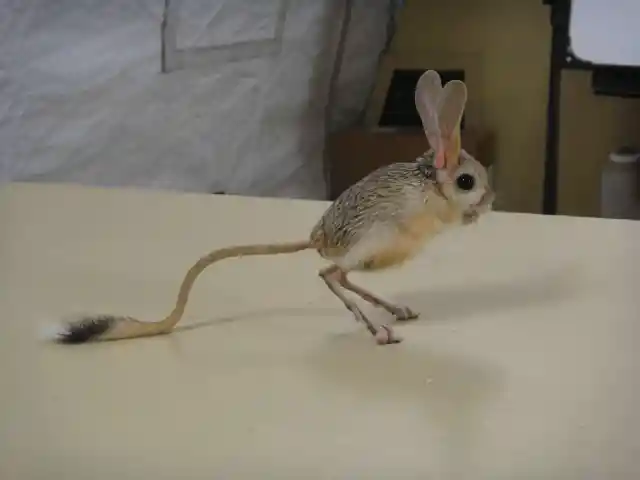
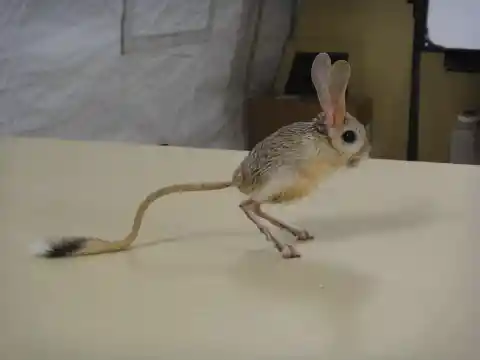
Their long ears act as a thermoregulator and keep them cool. Most jerboas are vegetarians, as they eat a mix of seeds and succulent plants. However, long-eared jerboas need some meat, so they need to eat insects, making them one of the only omnivores in the jerboa family.
#24. Markhor
The markhor is the national animal of Pakistan. They are extremely gifted climbers, they can even climb trees and hills to look for food or evade predators. The most notorious characteristic of the markhor is its long and spiral horns. And yes, you guessed it… they are very valuable in the market, so the markhor population is, unfortunately, diminishing at a super-fast pace.
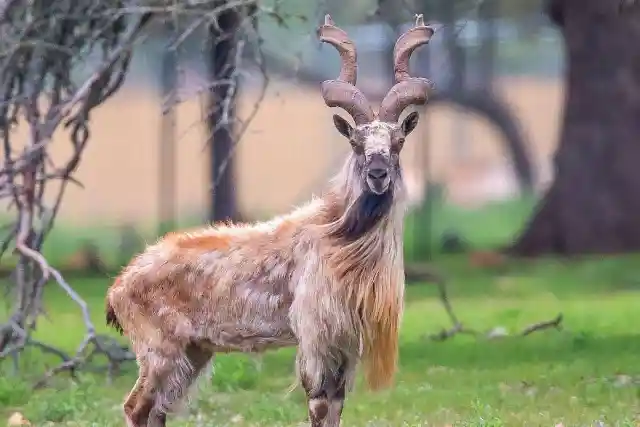

This animal was at the brink of extinction but thanks to the works of NGOs like Save Our Species and WCS Pakistan, who pressured the Pakistani government to reduce licenses to hunt them down from non-restrictive to just 12 per year, the markhor population grew by a 20%.
#23. Okapi
If you liked the hybrid of #25, you cannot miss this specimen native to the canopy forests of the Democratic Republic of Congo (DRC), the okapi. It is a mix among a giraffe, a horse, and a zebra and was believed to be a myth until 1900. Okapis are known as the ‘forest zebra’ or the ‘forest giraffe’.

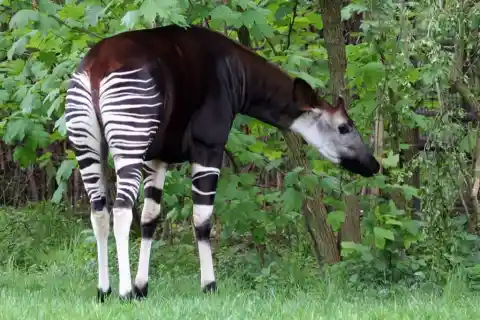
The okapi shares biological features with its long-necked cousin, the giraffe. They both have prehensile tongues of around 30cm long and they are both herbivore ruminant mammals. Their differences are in plain sight: okapis’ necks aren’t as long as those of giraffes’, but the most striking difference between the two are those black-and-white-striped “cancan tights” that okapis have.
#22. Aye-Aye
The aye-aye is a rare lemur native to Madagascar. It is one of the two species that use an unusual feeding method known as “percussive foraging”, which consists in chewing a hole into a tree to locate larvae and insects. Once the hole is made, the aye-aye will insert its long middle finger into it and pull its content (often, grubs) out.
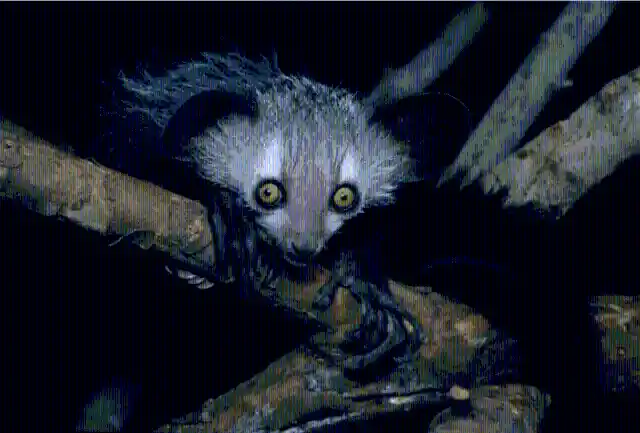
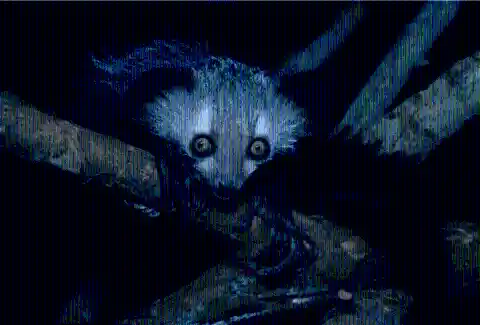
Aye-ayes find their preys by using echolocation signals that are used to detect the vibrations and movements of active grubs within the cavities. Since moving sideways is more difficult to them, these animals climb trees using vertical leaps, like squirrels.
#21. Dementor Wasp
This species was discovered in 2007 and named in 2014 by the public. The horrible method by which they catch their prey was said to be as dreadful as the dementors’ soul-sucking in the Harry Potter series. The dementor wasp will sting venom in a cockroach’s head which will cause the cockroach to enter into “zombie” mode.
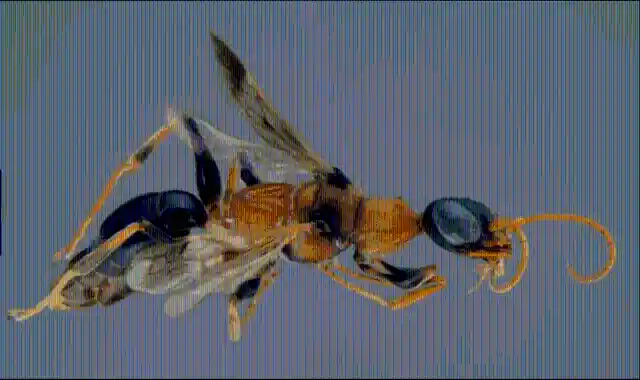

When the cockroach is precluded from acting on its own, the dementor wasp will lay its eggs into the cockroach, using it as an incubator. After a few days, the eggs hatch and start feeding on its host and when they are grown enough, they will eat the vital organs of the cockroach, killing it.
#20. Saiga Antelope
The most distinctive characteristic of saiga antelopes is their protruded tubular noses which cover their mouths. Although the nose makes them look weird, it prevents dust from entering the lungs during summer and warms the cold air before entering the lungs in winter. Males are the only ones that have horns, and they use them in order to fight for mating.
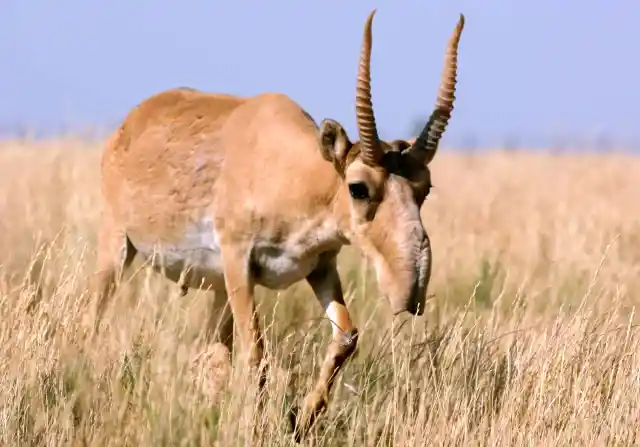
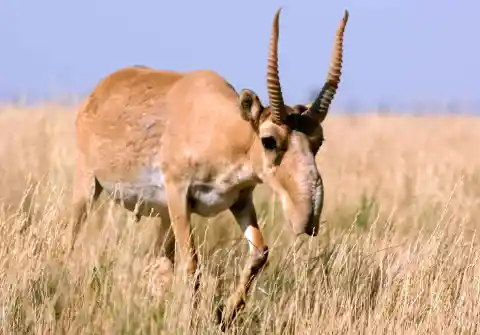
Unfortunately, their horns are used in traditional Chinese medicine, a situation which puts them in jeopardy. On the bright side, females are very fertile (they start giving birth at the age of one), and they often produce twins or triplets. Moreover, several NGOs look after the conservation of the saigas to protect them against indiscriminate hunting.
#19. Yeti Crab
This crustacean cultivates its own food in its body. Its hairy claws are full of bacteria that, according to scientists, serve two purposes: Firstly, the bacteria serve as food, and secondly, they detoxify the poisonous minerals in the water emitted at the hydrothermal vents, where the crabs live. They also were spotted feeding on mussels.
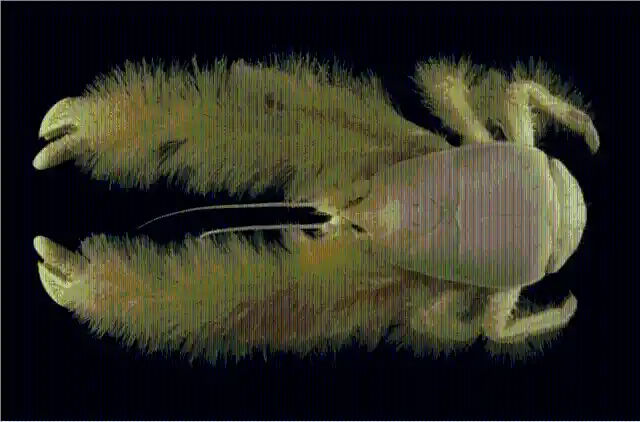
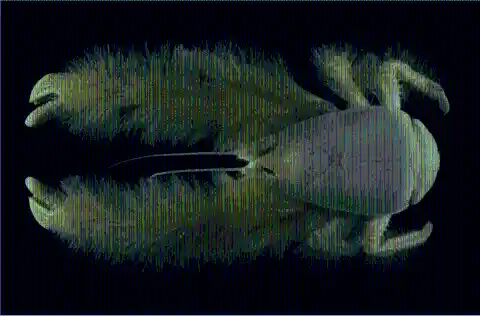
The yeti crabs have a very poor sight with a very poor pigmentation, which leads to thinking they are mostly blind. They can be found near hydrothermal vents along the Easter Island, at a depth of around 2,200 meters. They choose the warmth of these vents because, otherwise, they would freeze at those temperatures (between 2 to 10 degrees Celsius).
#18. Sea Pig
Sea pigs are in fact sea cucumbers, belonging to the family of echinoderms. They are almost impossible to see (in spite of the fact that in certain oceans they represent the 95% of the total weight of animals in the sea-floor) since they inhabit the coldest and deepest parts of the ocean.

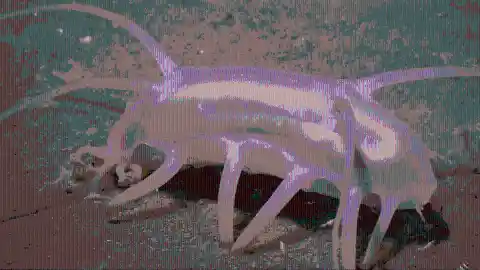
Sea pigs have hydraulically operated extremities that inflate and deflate to allow the animal to navigate the oceans. These “legs” also have a sensory function that helps sea pigs to detect the chemical trails of its next food. They feed on decaying plants and animal material.
#17. Hummingbird Hawk-Moth
Though it may seem a hummingbird at first sight, because of its similarities, it is not. It is an insect. They have menacing eyes that appear to warn predators to keep their distance since they seem to be “looking” at you from all angles. The fact that they resemble other birds also protects them from some predators.
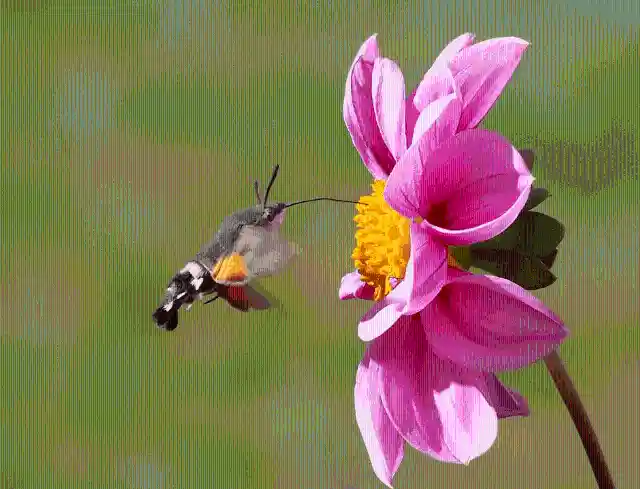
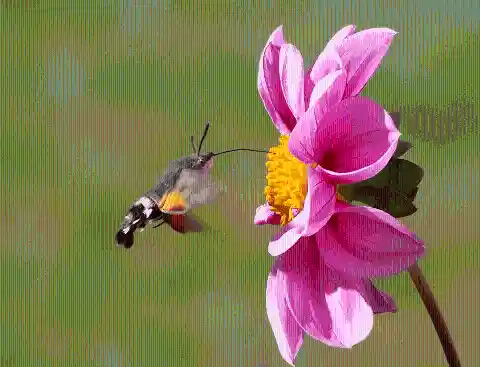
Like hummingbirds, they can feed while hovering over the flowers, move sideways and backward, and they even make humming sounds. This can be explained by the convergent evolution that this little insect experimented, which causes the imitation of certain behaviors of a different species in order to survive.
#16. Tufted Deer
Tufted deers are mammals that inhabit the mountainous forests of Myanmar and China. They are called tufted deer due to the tuft in their heads that gives them their particular appearance. What an odd fashion!

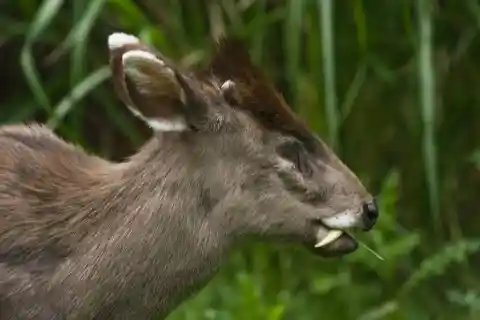
Males have a pair of long fang-like canines that reach an average of 2.6 centimeters long, which they use to protect their territory. Both males and females lack the upper incisors, which are the teeth that enable chewing and cutting food. Instead, they have hard upper pads against which the tufted deer presses its lower incisors during the chewing of vegetation and fruits.
#15. Lowland Streaked Tenrec
Tenrecs are very common in Madagascar. They have characteristics of both a shrew and a hedgehog in one body. Their most remarkable feature is their yellow spiky crests which act as a self-defense measure against predators. Baby tenrecs lack spines, which start to develop the first day after birth.
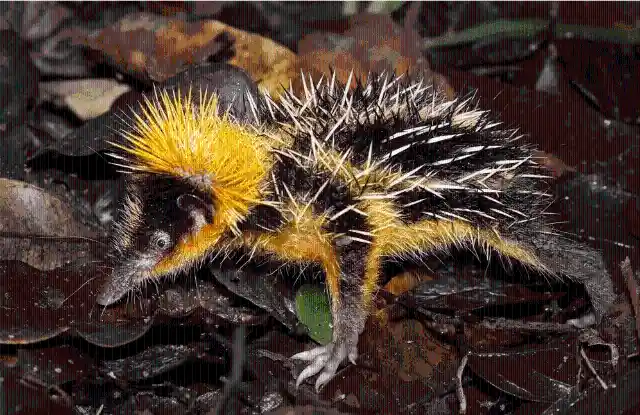
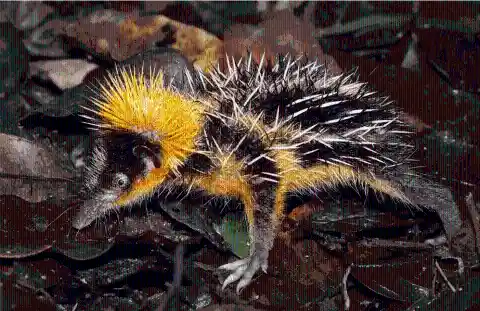
The streaked tenrec is the only mammal that practices stridulation – this is when an animal rubs together parts of its body to give out a sound; in its case, it rubs its spines to communicate.
#14. Panda Ant
First of all, the panda ant is a misnomer, since actually, this little insect is a type of non-flying wasp. Though they may look cute, they have a rather powerful and painful sting that can knock down animals that are much larger than they are. It is for this reason that they are called ‘cow killers‘.
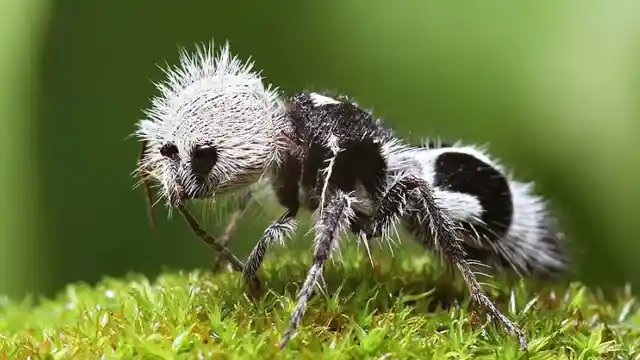

They are around 8 millimeters long and 2 to 3 millimeters tall. They primarily depend on nectar as their main source of food. In spite of the fact that males tend to be nocturnal and females are rather active during the day, panda ants are “thermophilic“, that is, they can tolerate light but are more active after sunset temperatures.
#13. Mata Mata Turtle
The Mata Mata turtles are not from the location of Matamata, otherwise known as the location where the Lord of the Rings was situated (Hobbiton). The Mata mata turtles inhabit the northern area of South America, including Venezuela, Brazil, Peru, Ecuador, Colombia, and Bolivia.

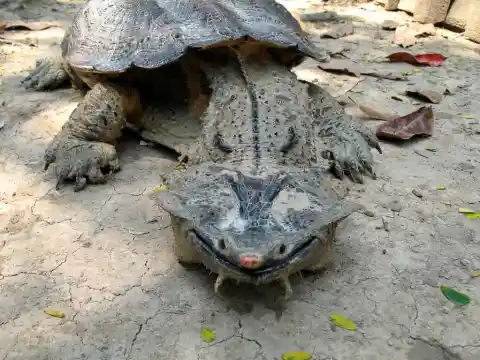
Mata matas blend in with the environment and vegetation because of their color and general appearance, as they resemble a big rock. Their snouts act like snorkels, so they don’t need to move much to breathe. They are loners, but they seem not to care a lot about it since they always seem to be smiling.
#12. Red-Lipped Batfish
This piscivore rare fish seems to be a step ahead in the evolution scale since it has legs which allow him to walk on the oceans’ floor. They are not very good swimmers, though. Red-lipped batfishes can be found at depths of between 3 and 76 meters around the Galapagos Islands.
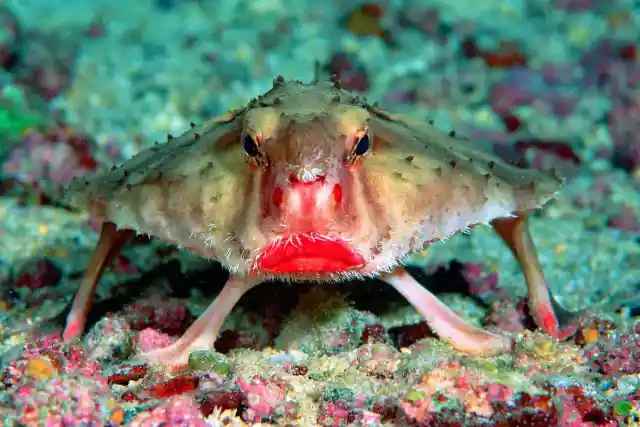
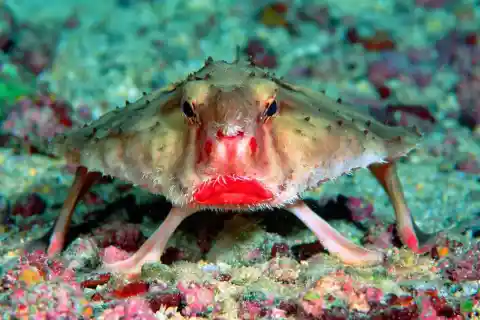
Even though they look like they have just caused its meal to perish in a bloody way, red-lipped batfishes’ lips are meant to facilitate species identification during spawning and mating. Males have it with the purpose of attracting the female, contrary as it is with humans.
#11. Long-Wattled Umbrellabird
Long-Wattled Umbrellabirds owe their name to the notorious characteristics of the male, which boast an Elvis-like crest and a long wattle that protrudes from their necks, which is about 35 cm long and covered with feathers. Females lack the wattle and are much smaller than their male counterparts, and they resemble a crow.

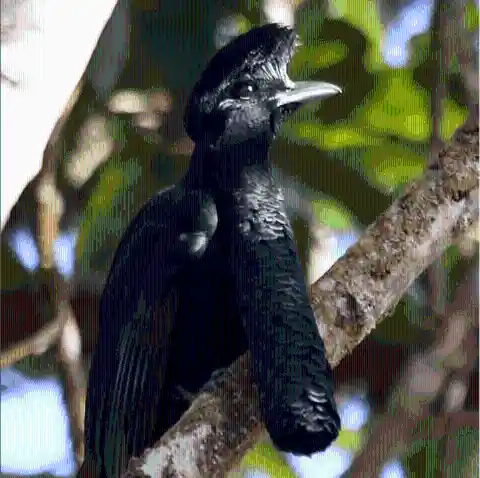
In mating season, males use these attributes to attract the female by inflating their wattles and making loud noises that can be heard up to a mile away. Long-wattled umbrellabirds are considered endangered due to habitat loss caused by logging, road building, and some other human exploitation activities.
#10. Satanic Leaf-Tailed Gecko
How satanic could this 2.5-to-3.5-inch- Malagasy gecko be? Despite its name, this creature is very tranquil. Geckos’ flat bodies are covered with a skin that imitates the colors and veins of a leaf, and their tails are imperfect and bear notches to resemble the gnawing of little insects on a dead leaf.

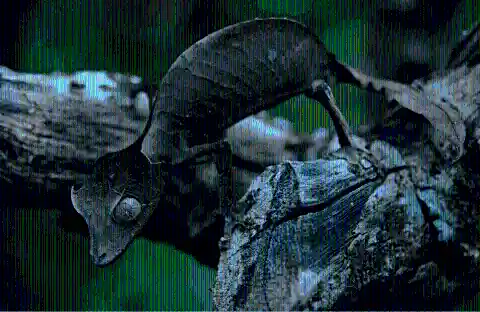
The only threatening trait about these little ones is their mouths. When in distress, they open them wide exposing a menacing red interior, but their appearance allows them to be kept out of the radar most of the time. The scientific name of this species, phantasticus, is Latin for “imaginary”.
#9. Glass Frog
These little amphibians are one of the rarest animals anyone could see, not because they are difficult to spot (in fact, tropical rainforests are full of them), but because you can see through them due to their translucent skin. You can see their greenish- whitish bones, their intestines, their liver, and even their beating heart.


Due to the extremely thin skin on their stomachs and extremities, and the severe lack of pigment in their cells, these frogs’ bodies cannot reflect the incoming light. On the contrary, they allow it to pass right through them.
#8. Long-Horned Orb Weaver Spider
Although it may seem this spider is equipped with a WiFi antenna, the spiny horns are used to intimate predators. The long-horned orb-weaver spider’s bite is not dangerous for humans, but it is lethal for its victims, which are stunned, wrapped in silk, and devoured. Venomous preys are first wrapped, then bitten.

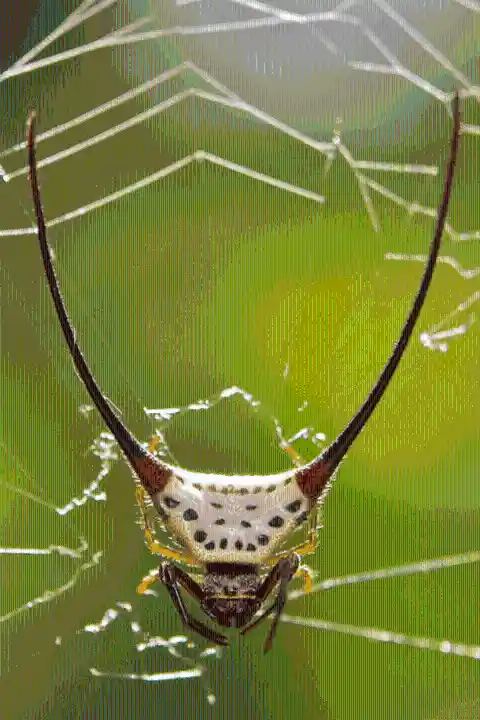
This spider species exhibit a characteristic known as ‘sexual cannibalism.’ The males, which are smaller than females, are attacked during the first copulation and get eaten in 80% of the cases. Surviving males inevitably die after their second copulation.
#7. Superb Bird-Of-Paradise
This super weird bird is native to New Guinea. Males are completely black except for their turquoise breast, a pair of equal turquoise eyes, and a yellow beak. During mating season, the male spreads its wings as if it had an elliptical cape, disguising its beak among black feathers.
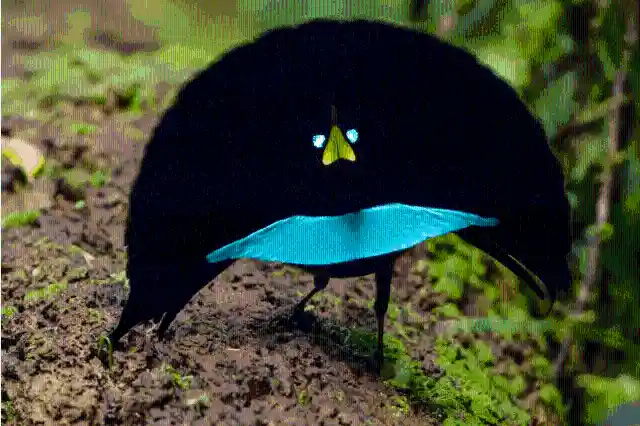

The low population of females increased the competition amongst males, who adopted a bizarre dance to catch the females’ attention. Males even prepare their own “dance floor” by scrubbing the dirt with leaves before courtship starts. Even after the display of a wonderful dance, around 15 or 20 males are rejected before the female finds its mate.
#6. Honduran White Bat
Native to the rainforests of the Caribbean, Honduras, Nicaragua, Costa Rica, and western Panama, this cute little bat is unique. Only one out of 1,300 bats have white fur, and yellow ears and nose. Honduran White Bats only are 3-4 centimeters’ long and they lack a tail, they do not live in caves and they have a membrane that covers their skull and protects them from the sun’s UV lights.


They are also known as Caribbean White Tent-making Bats because they put their nests in the Heliconia plant leaves in a kind of tent built out of the leaf. They cut the veins of the leaf with their tiny teeth, the leaf falls down into a “v” shape and the “tent” is big enough to shelter 1 to 15 bats. Since they are polygamous, the nest will be home to (generally) 1 male and 6 females, and the male will mate them all.
#5. Star-Nosed Mole
This mole is nearly blind and thus depends on its other senses. This weird mole’s nose is formed out of 22 fleshy appendages (called ‘rays’) which the mole uses to hunt its prey by hitting the soil repeatedly with it. With each hit, 100,000 nerve fibers are activated, sending an outflow of information which helps the mole discover where pulses are coming from.

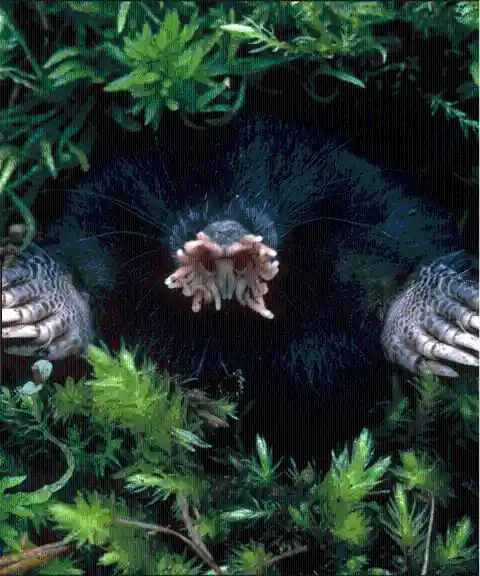
They eat faster than any other mammal on Earth. Thanks to its rays, the mole can find and devour insects and bugs in less than two-tenths of a second. Star-nosed moles are innate “food foragers” because they are active during day and night, during winter, through snow, and will swim frozen ponds to seek out for food.
#4. Dumbo Octopus
The most notorious feature of Dumbo Octopuses is, of course, their “ears” that resemble that of the baby elephant. They are also called ‘winged octopuses’, but these are neither wings nor ears; they are fins, which are used to float and move in different directions.
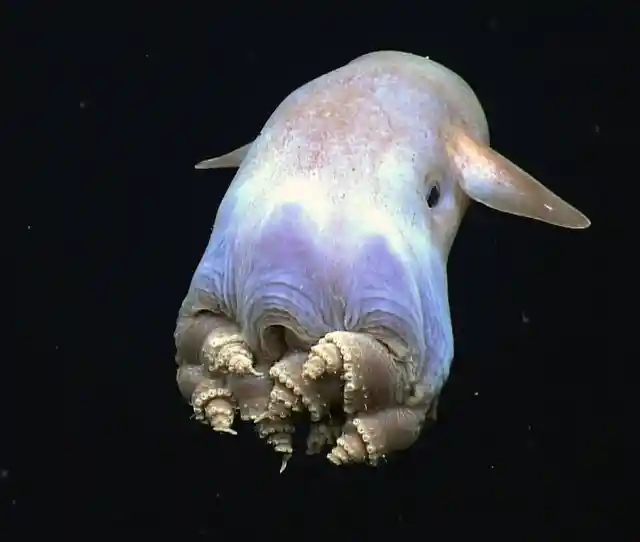

Dumbo Octopuses are very hard to spot since they inhabit the depths of the oceans of the world (9,800 to 23,000 feet deep), and are very small. Generally, they are less than a foot long. To camouflage, these little ones change their colors into white, red, brown, and pink.
#3. Japanese Spider Crab
Known for being one of the biggest crustaceans out there, the feared Spider Crab inhabits the Japanese sea. They are so big that some of them can be longer than twelve feet and can even weigh more than forty pounds each!
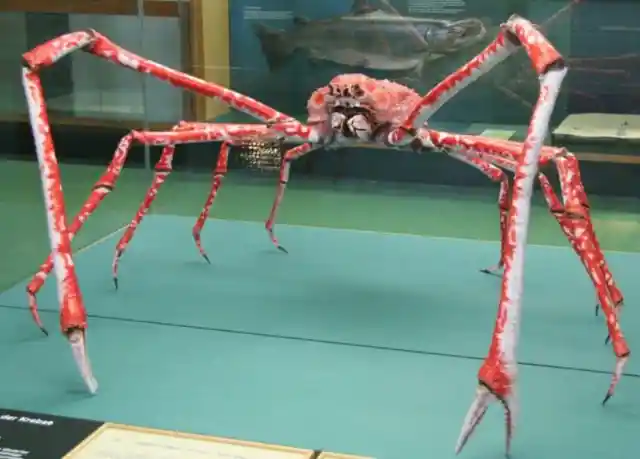
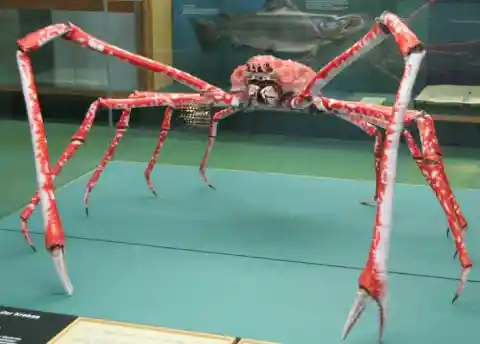
Another very interesting characteristic inherent to the Japanese spider crab is that they live really long, and by that, I mean more than 100 years. It might be the diet they are on, as they prey on very small fish and, sometimes, they even eat corpses! Luckily for most of us with fear of spiders, these type of crabs usually live 150 to 300 meters deep in the sea.
#2. Venezuelan Poodle Moth
The Venezuelan Poodle Moth is one of the most recently discovered moths around the world, and it is the rarest. It was found at the Gran Sabana National Park in Venezuela in 2009. These little creatures are covered with hair, like a Poodle.
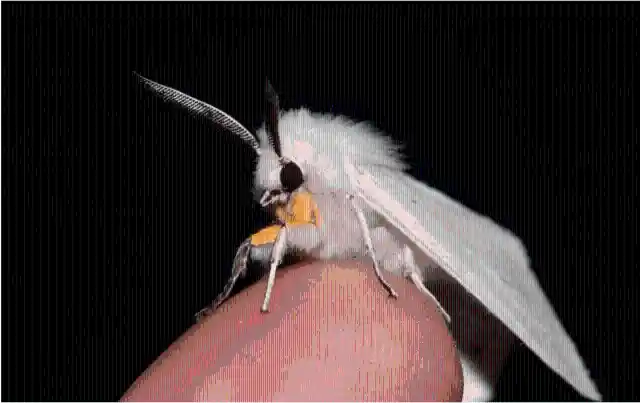
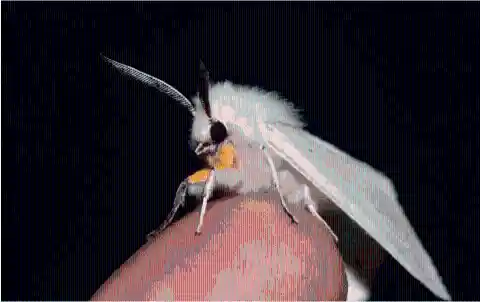
It is adorably weird. Would you run away from it or have it like a very awkward pet? When the first shot of this insect came out, people on social networks thought it was photoshopped. But it was not! Not much is yet known about this hairy fairy, but one thing is for sure, Furby has competition on the line!
#1. Blue Glaucus
Also known as the ‘Blue Dragon‘, blue glaucuses are equally gorgeous as they are deadly. They are slugs native to Australia’s shores, and they feed on smaller poisonous jellyfish. The poison ingested is concentrated within their bodies and then they can release it in a sting more powerful than that of their prey.

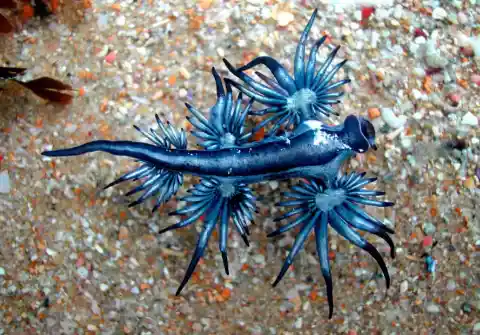
Thanks to its silvery and blueish colors, it is easy for them to camouflage on the ocean’s surface. So, it can be safe from predators and be a predator itself. They like warm waters. So, if you come across one, just admire its beautiful colors from a safe distance!